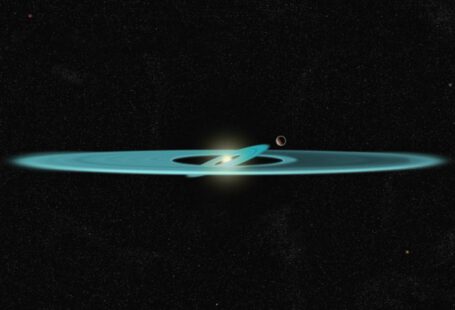Stars are born from vast clouds of gas and dust in space, but just like all living things, they eventually come to an end. The life cycle of a star is a fascinating journey, and its ultimate fate depends on its mass. In this article, we will explore the different ways in which stars meet their demise.
The Birth of a Star
Before we dive into the topic of stellar death, let’s take a brief look at how stars are born. Stars are formed in regions of space with high concentrations of gas and dust, known as nebulae. These nebulae can be triggered to collapse under the influence of gravity, causing the gas and dust to come together and form a protostar.
Subheading: Main Sequence Stars
The majority of stars in the universe, including our own Sun, fall into the category of main sequence stars. These stars spend the majority of their lives fusing hydrogen atoms in their cores to form helium through a process known as nuclear fusion. This fusion reaction releases an incredible amount of energy, providing the star with the necessary pressure to counteract its own gravity.
As a main sequence star ages, it eventually runs out of hydrogen fuel in its core. This depletion causes the core to contract and heat up, leading to the expansion of the star’s outer layers. The star becomes a red giant, a massive and luminous object. In this phase, the star fuses helium atoms to form heavier elements, such as carbon and oxygen.
Subheading: Planetary Nebulae and White Dwarfs
For stars with masses similar to that of our Sun, the red giant phase eventually gives way to the formation of a planetary nebula. As the outer layers of the star are expelled into space, they create a beautiful, glowing shell of gas and dust around the remaining core. The core itself becomes a white dwarf, a hot, dense object about the size of Earth.
White dwarfs are incredibly dense, with a teaspoon of material from a white dwarf weighing as much as an elephant. They are held up by the quantum mechanical pressure created by the interactions between the electrons in their atoms. Over billions of years, white dwarfs cool down and slowly fade away, eventually becoming black dwarfs.
Subheading: Supernovae and Neutron Stars
For stars with masses several times greater than that of the Sun, their demise comes in a much more explosive fashion. When these massive stars exhaust their nuclear fuel, their cores collapse under the force of gravity, leading to a catastrophic explosion known as a supernova.
During a supernova, the outer layers of the star are blasted into space, while the core collapses in on itself. This collapse can result in the formation of a neutron star, an incredibly dense object composed mainly of neutrons. Neutron stars are only a few kilometers in diameter but have masses greater than that of the Sun.
Subheading: Black Holes
The most massive stars, those with masses greater than about 20 times that of the Sun, meet a truly dramatic end. After a supernova explosion, the core of the star collapses to form a black hole. Black holes are regions of space where gravity is so strong that nothing, not even light, can escape their gravitational pull.
Conclusion:
The death of a star is a spectacular and diverse process that depends entirely on its mass. From the graceful transformation of a main sequence star into a white dwarf, to the violent explosion of a supernova leading to the birth of a black hole, the fate of a star is a captivating phenomenon in the vastness of the universe. Understanding the life cycle of stars not only deepens our knowledge of the cosmos but also sheds light on the origins of the elements that make up our very existence.





